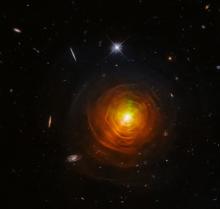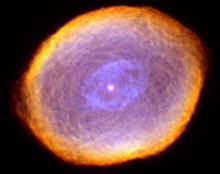Listen to today's episode of StarDate on the web the same day it airs in high-quality streaming audio without any extra ads or announcements. Choose a $8 one-month pass, or listen every day for a year for just $30.
You are here
Moon and Spica
Several stars that are easily visible to the eye alone are destined to explode — some of them quite soon. The list includes Betelgeuse, the bright orange shoulder of Orion; Rigel, the hunter’s blue-white foot; and Antares, the heart of the scorpion.
Another one stands close to the Moon early tomorrow. Spica is the leading light of the constellation Virgo. It’s to the lower right of the Moon at first light.
Spica actually consists of two stars. But most of the system’s light comes from the bigger star. It’s about 20,000 times brighter than the Sun, and tens of thousands of degrees hotter.
The key to its future, though, is its mass — about 11 and a half times the mass of the Sun. When such a heavy star can no longer produce nuclear reactions in its core, the core collapses to make a neutron star or a black hole. The star’s outer layers fall inward, then rebound. They blast into space with tremendous force — creating a supernova.
Spica’s main star is already on that track. It’s beyond its “normal” lifetime, so it’s starting to puff up. Eventually, it’ll swell to a hundred times its current diameter or more. Its companion star is quite close, so it’ll have an effect on the bigger star’s evolution — although no one is quite sure what that might be.
In the end, though, the bigger star is likely to blow itself to bits. And it could happen quite soon on the astronomical time scale — within the next couple of million years.
Script by Damond Benningfield






